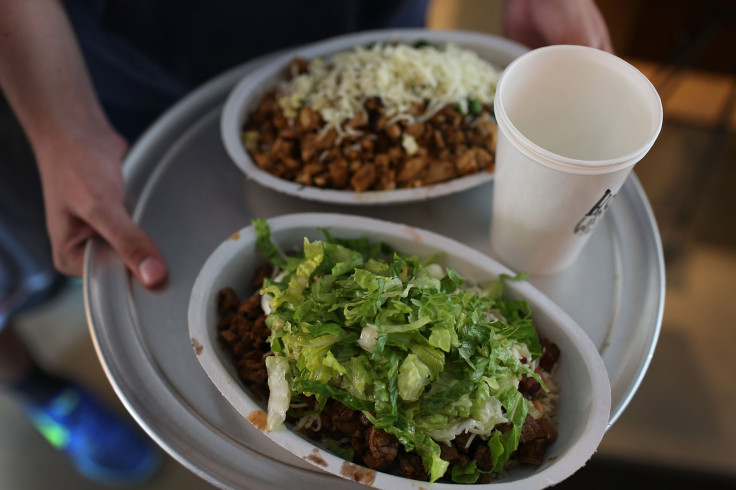Is It Cheaper To Eat Out Or Cook? GrubHub, Blue Apron, Seamless And Other Convenience Services Reshaping How We Eat

Restaurants are frequently expensive. And young people often are broke. These truths are almost self-evident.
And yet, if one were to peruse the data on a millennial’s smartphone, including the one in the pocket of this reporter, there’s a decent chance this information would contain an expansive history of delivery orders from services such as GrubHub.
As some signs point toward a slowdown for restaurants across the U.S., Americans who have the ability to spend — especially millennials eager to avoid the kitchen — have displayed increasing interest in eating food that somebody else prepares, particularly when it can be delivered.
For the first time, sales last year at U.S. eating and drinking establishments, $54.9 billion, outpaced sales at the country’s grocery stores, $52.5 billion, Quartz reported this month. But Americans are getting picky about how they eat out. Visits to fast-food restaurants stalled in the three months between March and May, while visits to outlets in the important fast-casual segment, exemplified by the likes of Chipotle Mexican Grill and Panera Bread, actually declined last month, according to new data collected by NPD Group, a market research company in New York. Key findings of the firm’s report were published in the Wall Street Journal Sunday.
Allowing customers to order and pay for food from local restaurants either through a personal computer or via a mobile application, GrubHub is one of the big players in the food delivery market. In February, it accounted for about 227,100 orders per day with almost 7 million active diners, according to the Los Angeles Times. The newspaper also reported that on-demand food startups raised $5.7 billion last year, a 152 percent increase over the year before.
Other operations that deliver prepackaged, ready-to-cook meals — such as Blue Apron, which reportedly delivers 5 million meals per month — are also popular among Americans seeking to avoid their local grocery stores.
The rise of food delivery services has come even as cooking at home remains the cheapest option as far as getting dinner on the table is concerned. The U.S. Department of Agriculture reported that the consumer price index metric for grocery store items fell by 0.5 percent from April to May of this year and was down 0.7 percent compared with May of last year. In contrast, the CPI metric for restaurant purchases rose by 0.2 percent from April to May and was up 2.6 percent compared with May 2015.
(un?)fortunately this is how my personal line graph looks too: no one cooks anymore https://t.co/uJ8D8lu1l7 @qz pic.twitter.com/yTZkdd7plj
— Marie Whittaker (@MarieCWhittaker) June 14, 2016
A lot of these figures are driven by millennials, members of the largest living generation in the nation, born between the early 1980s and the late 1990s. The average millennial eats out about 3.4 times per week, more frequently than the average person in other age groups, who eats out around 2.8 times per week, according to a study by the Boston Consulting Group, a global consulting firm headquartered in Boston. In terms of expenditures at restaurants per month, millennials spend $174 while nonmillennials spend $153, Restaurant Marketing Labs reported in an infographic.
Michael Walden, professor of agricultural and resource economics at North Carolina State University, said some of that spending likely comes from young purchasers living in urban areas who walk to restaurants to eat out as a social activity. But it’s also a matter of convenience for young workers, who have yet to take on the responsibility of families but have taken on long hours at the office.
“Their time spent in the kitchen preparing food could be best spent otherwise,” Walden said.
Among some people, especially younger folks with decent salaries, the time saved by not cooking effectively defrays the cost of restaurants. Those willing-to-spend millennials are “dominating” spending at restaurants, Walden said.
Hudson Riehle, head of research at the National Restaurant Association, said quick-service restaurants — meaning places other than traditional table-service locations and including fast-food and fast-casual outlets — were expected to account for $223 billion in 2016 sales, an uptick of 5.9 percent, outpacing the industry’s average growth of 5 percent. That’s considered modest growth, which conceivably could become even more modest, as the sales expectations component of the association’s Restaurant Performance Index, a measure of the industry’s health, declined each of the past three months.
Much of the spending at restaurants centers on off-premises buying, encompassing options such as delivery, drive-through service and, increasingly, mobile purchasing. Overall, off-site buying accounts for about three-fifths of spending at quick-service restaurants.
“It really is that off-premises market that has been responsible for the majority of industry growth over the past decade,” Riehle said. “Particularly younger individuals, their basic expectation is that [a restaurant experience] includes some kind of technology.”
© Copyright IBTimes 2025. All rights reserved.






















